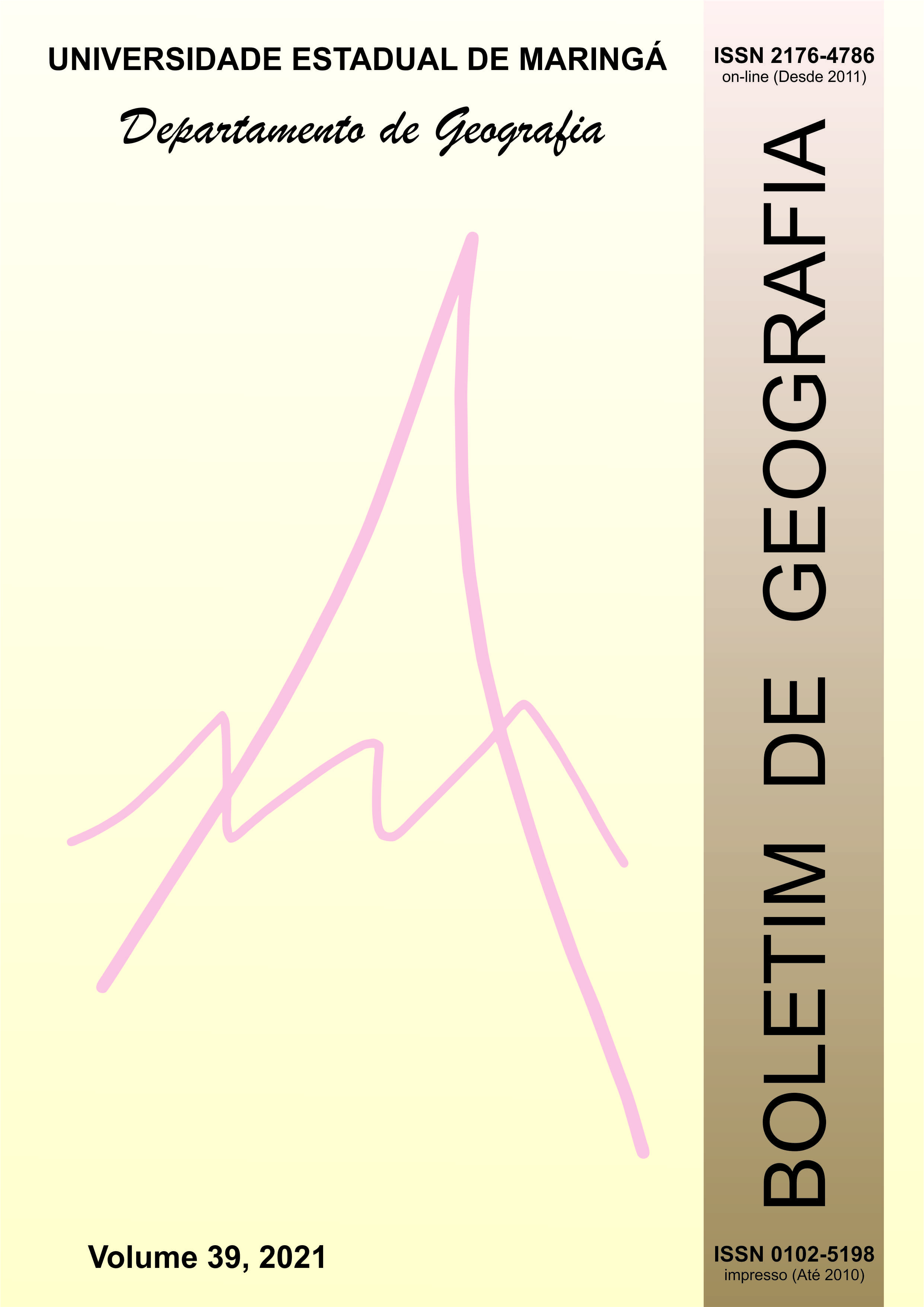Assessment of forest restoration of valley bottom areas of the Cleópatra/Moscados stream hydrographic basin, Maringá, state of Paraná, Brazil
Abstract
The valley bottoms are remnants of a native vegetation that was largely destroyed and fragmented during the historical process of human occupation. They are essential for the preservation of water resources, geological and soil stability, maintenance of biodiversity and other ecosystem services that forested areas perform to alleviate urban environmental problems. In this sense, this study aims to classify the vegetation units of the valley bottom areas, located in the Cleópatra/Moscados stream basin, in the central region of the city of Maringá, state of Paraná, according to the current degree of degradation in which they are found. For this, multicriteria analysis methodology was applied, which basically included varied analysis of vegetation, susceptibility to erosive processes, occurrence of socio-environmental problems and analysis of the restoration of vegetation cover between the years 2003, 2013 and 2018. It was identified that point 1 of analysis is the one with the best conservation status, however, most of it was considered highly degraded and in an initial stage of ecological succession, presenting a wide edge effect, evidenced by the expressive number of lianas and vines, marked presence of exotic/invasive species and low diversity of native species. A spatial pattern was established in the degradation of forest fragments in the study area, in which the most degraded areas appear in the low course of the Cleópatra stream, towards the less central area of the city.
Downloads
Copyright (c) 2021 Boletim de Geografia

This work is licensed under a Creative Commons Attribution 4.0 International License.
O Boletim de Geografia está licenciado através da Creative Commons Atribuição 4.0 Internacional (CC BY 4.0).
Autores que realizam submissões ao Boletim de Geografia concordam com os sequintes termos:
- Autores retêm todos os direitos autorais e concedem à Revista direitos exclusivos da primeira publicação, com o artigo licenciado sob os termos da Creative Commons Atribuição 4.0 Internacional (CC BY 4.0).
- Após a publicação, fica permitido ao autor a republicação em qualquer outros meios de divulgação, desde que mencionada a fonte original.












